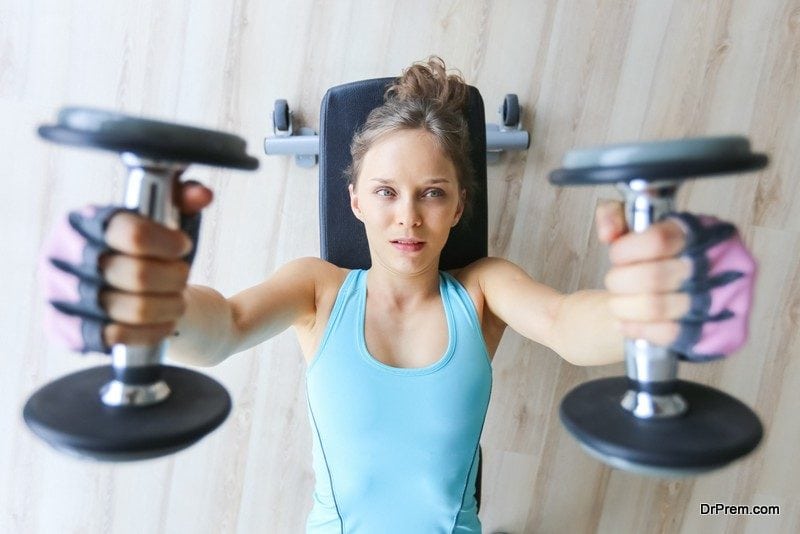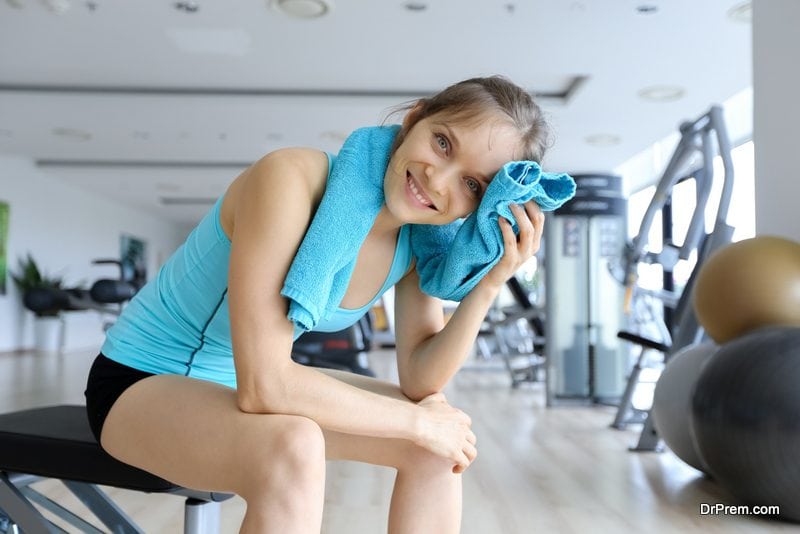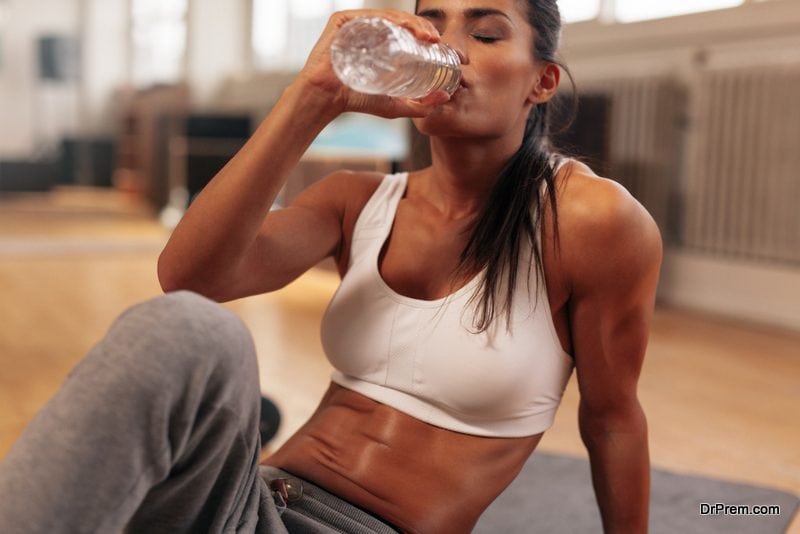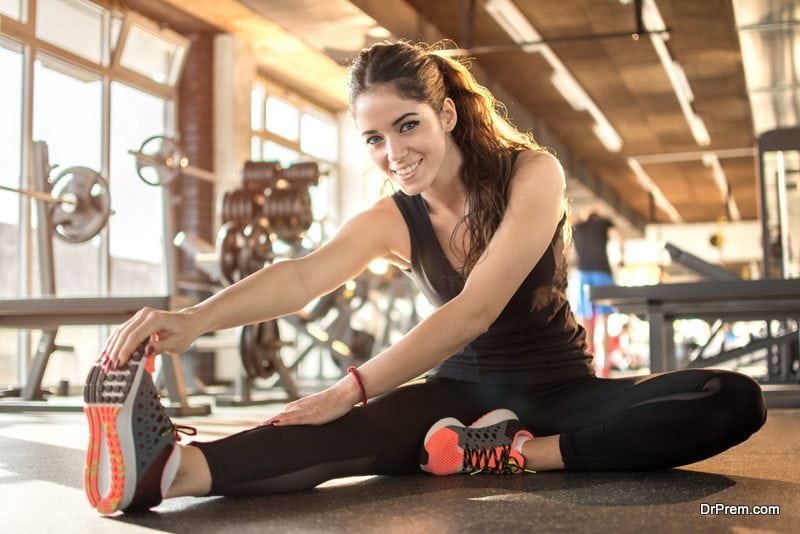It’s no secret that exercise is an important element of our overall health and well being. Incorporating some form of physical activity into your daily routine is required to keep your heart, lungs, and mind strong and functioning at optimum levels. But it’s important to note that there are some health and safety precautions to take when utilizing a gym and it’s amenities. Check out this list of things to keep in mind when joining and using a gym to make sure you remain safe and healthy.
Use the Equipment Properly
 This is extremely important when exercising at a gym. The equipment provided is large, heavy, and can be complicated. Using the equipment in the wrong way can also result in serious injury. If you’re unsure of how to properly use a certain piece of equipment, ask a gym trainer or staff member to help you. They will be more than willing to demonstrate the right way to use each machine. Start off with lighter weights and add on as needed. You can always increase your resistance or intensity but if you start out too heavy at first, you may seriously injure yourself. If you’re lifting weights on a bench, be sure to have a spotter on hand. This person will stand by in case you’re unable to lift the bar or encounter any other complications during your session. Never use a bench without a spotter.
This is extremely important when exercising at a gym. The equipment provided is large, heavy, and can be complicated. Using the equipment in the wrong way can also result in serious injury. If you’re unsure of how to properly use a certain piece of equipment, ask a gym trainer or staff member to help you. They will be more than willing to demonstrate the right way to use each machine. Start off with lighter weights and add on as needed. You can always increase your resistance or intensity but if you start out too heavy at first, you may seriously injure yourself. If you’re lifting weights on a bench, be sure to have a spotter on hand. This person will stand by in case you’re unable to lift the bar or encounter any other complications during your session. Never use a bench without a spotter.
Listen to Your Body
This is an important rule whenever you’re working out, whether it’s at the gym or at home. Your body knows what it needs. It also knows its limits and has a way of letting you know. If you’re feeling fatigued, weak or lightheaded, it likely means that you need to slow down, take a break or stop exercising all together. Don’t overwork or overexert yourself. Thirty minutes of exercise is more than adequate. Try doing some cardio and weight training. This will help switch things up, keep your muscles guessing, and keep you and your muscles from burning out. When in doubt, go slow and be sure to ease into any new workout regime and consult your doctor beforehand.
Bring a Towel

When you’re done using any type of machine at the gym, it’s proper etiquette to wipe up any sweat left behind. Not only is it unsanitary to leave a dirty machine but it can actually be a safety hazard. If the next person tries to lift a weight, grab a bar or hold onto any portion of the machine that is covered in sweat it could be slippery. This may cause the individual to drop the weight, fall or worse. Be sure to wipe down your machine when finished. Your towel will also help keep you safe. Use it to wipe the sweat from your hands when lifting weights and from your face and eyes to avoid impaired vision.
Wear Footwear in the Locker Room
If you plan to use the locker room in the gym to shower, you’ll want to wear flip flops or some other protection on your feet. Unfortunately, any public shower can be a breeding ground for different types of foot fungus such as athlete’s foot. Warts are another common bacterial infection that is easily passed from one person to another. If someone using the gym shower or locker room has a planters wart, this can be passed from their feet to yours.
Hydrate

A basic health and safety precaution when exercising is to stay hydrated. Water helps give your body the energy it needs during an intensive workout, as well as replenishes the moisture lost when you sweat. Water also helps lubricate your joints, allowing you to move freely and easily during your exercise routine. Regulating your body temperature is another important safety measure that hydration covers. It ensures that you don’t overheat. Without proper hydration, your body cannot perform at optimum levels which means you may find it difficult to finish your workout or complete it at the level of intensity you want.
Use Proper Form
Proper form goes right along with using the equipment properly. Without proper form, you are at risk of suffering a serious injury. Whether you’re using a machine, performing yoga, stretching or lifting weights, form protects your back, neck, and extremities while also ensuring that you get the most out of your workout. Form has a lot to do with targeting the right areas of your body. If you lack good form, you may not be getting the results you want. If you’re unsure of the right form, ask a trained professional to demonstrate it for you. Another great way to check form is to exercise in front of a mirror. Most gyms have mirrors on at least one side of the facility. Stand in the mirror and perform your exercise. Check things like your back, shoulders, legs, and feet. Make sure everything is in line and you aren’t straining yourself.
Stretch
 Any type of workout requires you to stretch both before and after and this holds true for gym workouts as well. Be sure to stretch any areas of the body you plan to work. If you’re using free weights, stretch your arm, back, and neck muscles prior to lifting. On leg day, be sure to stretch your calves, quads, and hamstrings. It’s best to stretch all muscles before a workout, especially total body workouts such as using the rowing machine, taking a class or running. Stretching helps loosen up your muscles, get the blood and oxygen flowing, and prevent injury.
Any type of workout requires you to stretch both before and after and this holds true for gym workouts as well. Be sure to stretch any areas of the body you plan to work. If you’re using free weights, stretch your arm, back, and neck muscles prior to lifting. On leg day, be sure to stretch your calves, quads, and hamstrings. It’s best to stretch all muscles before a workout, especially total body workouts such as using the rowing machine, taking a class or running. Stretching helps loosen up your muscles, get the blood and oxygen flowing, and prevent injury.
Take Your Time
There’s no rush when it comes to working out at the gym. There’s no need to compete with other gym-goers. Work at your own pace and don’t compare yourself to anyone else. If you’re unsure of how to properly use a machine, be sure to ask. Stay hydrated and wipe down your equipment as a courtesy and safety measure. Get the most out of your gym workout by being safe and smart.
Article Submitted By Community Writer




